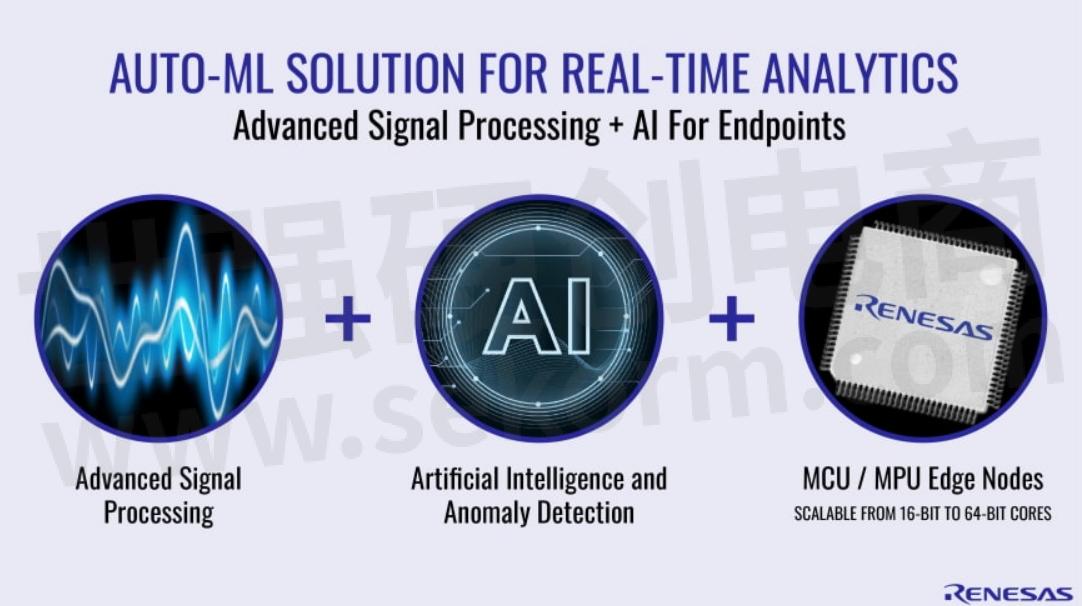AI at the IoT Edge Is Disrupting the Industrial Market

Artificial intelligence (AI) at the edge of the network is a cornerstone that will influence the future direction of the technology industry. If AI is an engine of change, then semiconductors are the oil driving the new age that is being defined by machine learning (ML), neural networks, 5G connectivity, and the advent of blockchain, digital twins, and the metaverse.
Despite recent disruptions to the chip industry due to supply chain and more recently, macroeconomic factors, the confluence of AI – and the Internet of Things (IoT) known as AIoT– is poised to shift the world from cloud-centric intelligence to a more distributed intelligence architecture.
It is expected that a staggering 73.1 zettabytes of data are expected to be generated by IoT devices, in 2025 according to IDC Research. As a result, endpoint data will increase at a CAGR of 85% from 2017 to 2025, driving intelligence from the cloud to the endpoint to run AI/ML workloads within tiny machines (TinyML). Some of the applications that are seeing the most disruption include the development of "voice as a user interface" to improve human-to-machine communication, as well as environmental sensing and predictive analytics and maintenance. Major growth segments include wearables, smart homes, smart cities, and intelligent industrial automation.
What are the benefits of embedding intelligence at the endpoint? Many industrial IoT applications operate within environments constrained by memory capacity, limited coMPUting, battery power, and sub-optimal connectivity. Moreover, these applications often require real-time responses that may be mission and system critical. Expecting such devices and applications to operate in a cloud-centric intelligence architecture just does not work.
This is where the power of embedding intelligence at the endpoint is evolving from standard industrial IoT implementations to what Renesas is calling AIoT for industrial applications.
Transforming data at the source of collection minimizes latency and enables optimized processing for time-critical applications. Because data is not processed and transported over the network, the security concerns related to the transfer and flow of data, are greatly minimized. Another advantage is that data handling can be linked with root-of-trust at the endpoint, making the implementation impervious to attacks. Since data processing is handled at or very near the source, Renesas can fully leverage data gravity and reduce the power consumption associated with turning on radios or moving data through the network.
Renesas' commitment to customers is to lead the industry in endpoint computing technology with the broadest range of MCUs and MPUs. Already this has enabled designers to leverage Renesas' rich ecosystem of IoT and AI/ML building blocks by tapping into a technology ecosystem that features more than 300 building blocks of commercial-grade software provided by Renesas's trusted partners.
Renesas growing AIoT portfolio also explains Renesas' recent acquisition of Reality AI, a new platform powering edge and endpoint AI in industrial IoT applications using Renesas processors. Reality AI automatically searches a wide range of signal-processing transforms and generates custom machine learning models while retaining traceability in its approach and offering valuable hardware design analytics. The models run on nearly every MCU and MPU core available from Renesas – with new ones added constantly.
This puts an incredibly powerful tool into the hands of designers to help them solve their most difficult problems because the model development is specifically for non-visual sensing use cases and is based on advanced signal processing math and edge deployment. This enables advanced analytics capable of supporting full hardware design and complete frameworks, including data collection, instrumentation, firmware, and ML workflows. Other solutions simply generate algorithms and models that often account for only 5% of typical project costs, while ignoring the other 95% of development expenses.
Renesas' comprehensive approach to AIoT design allows developers to reduce unscheduled equipment downtime, improve production efficiencies and perform sophisticated quality assurance tasks that are costly or difficult to replicate in a current testing environment.

In a real-world use case tested under 51 different environmental and load conditions in a three-ton residential HVAC system, Reality AI was able to achieve a greater than 95% accuracy when detecting and distinguishing single fault conditions. The test also detected indoor and outdoor air-flow blockage and charge faults as small as 5% from OEM specifications in both heating and cooling modes.
The convergence of AI and IoT for industrial applications is a megatrend with significant potential. The acquisition of Reality AI unlocks the potential of combining advanced signal processing with AI at the edge and is supported by Renesas' extensive hardware, software, tools, and ecosystem to provide all the building blocks you need to unleash your creativity.
- +1 Like
- Add to Favorites
Recommend
- Silicon Labs Expands MCU Platform with a 50MHz Core Frequency New BB5 8-bit MCU Family
- New MCU RL78/G23 Operates with 30% Lower Power Consumption than The Conventional MCU
- Renesas Extends RA MCU Family with RA6T1 MCU Group for Motor Control and AI-based Endpoint Predictive Maintenance
- Using Example Projects to Support RA MCU Designs
- Renesas Expands Low-Power Industrial and IoT Applications Reach With New RA4M2 MCU Group in Arm Cortex-Based MCU Family
- Renesas Extends Arm Cortex-Based MCU Family with RA4M3 MCU Group for Industrial and IoT Applications
- Renesas Strategic Partners Presented Many of the RX MCU Solutions at ET & IoT Expo 2021
- Easy Expansion of MCU Code Area! Introducing Example of Program Execution from Serial ROM Using QSPI XIP Mode
This document is provided by Sekorm Platform for VIP exclusive service. The copyright is owned by Sekorm. Without authorization, any medias, websites or individual are not allowed to reprint. When authorizing the reprint, the link of www.sekorm.com must be indicated.






























































































































































































































































































































































































































































































































































































































































































































































































































